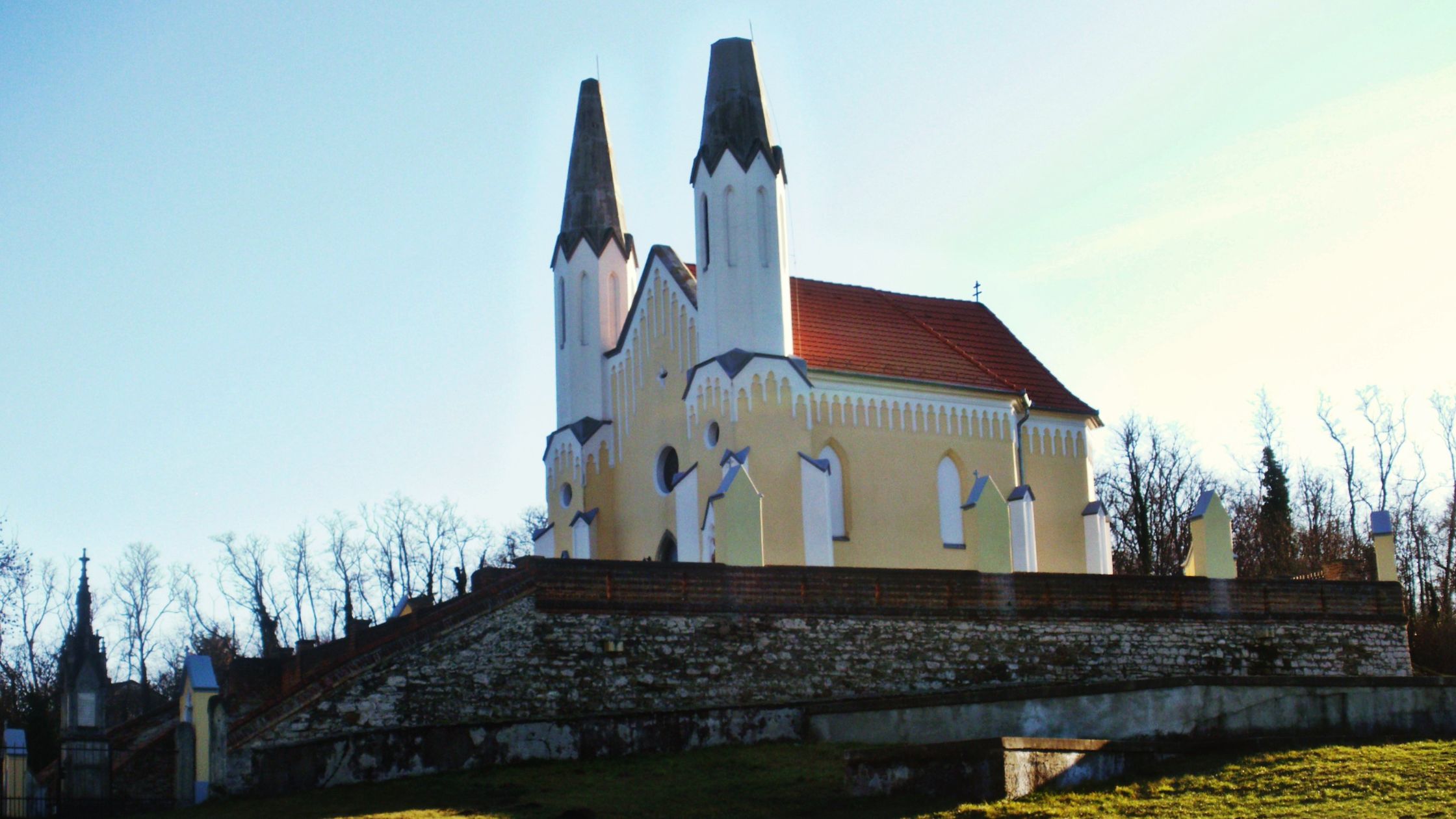
Storyteller Sitke
Hidden among the small hills of Hercseg Hill and Kemeneshát, you can find many hidden treasures in this small village with just a few streets. Turning off the main road onto József Attila Street, which leads to our apartment buildings, visitors are greeted by the atmospheric chapel on Kálvári Hill at the entrance to the village, famous for its rock concerts at the end of August. Hikers are well aware that the building is located on the National Blue Trail, but its uneven, truncated towers tell a different story.
In the 1980s, the small sanctuary was in a state of disrepair. The villagers joined forces to save it. The wooden towers were not identical even then, but by the end of the renovation, two symmetrical towers rose towards the sky… Until the first serious storm… when lightning struck the previously lower tower. However, this did not discourage the people of Sitke. They repaired the damage, and the chapel stood once again in all its glory on the hilltop. But then came another summer storm and another lightning strike, and the tower collapsed again, this time halfway. This went on for a few more years, until they began to ask the old folks about the building’s past. According to local legends, when the sanctuary was built in 1871, both towers were identical. But lightning continued to destroy the sacred place of the Felsőbüki family. There are several legends about why this happened.
One of these can be linked to when the Felsőbükiek rose from serfdom and became nobles. The family’s ancestor, Benedek Nagy, a serf, received a letter of nobility from the king in 1616, which was made possible by the fact that he had previously captured his noble master in Turkish captivity and paid the ransom demanded for his release. The nobleman, in gratitude, allowed him to obtain nobility. Of course, many questioned whether Benedek had obtained the considerable sum honestly, and it is said that a curse was placed on the family because of this.
According to another legend, a later relative, Nagy Lajos, got into a dispute with the gypsies who had settled on the border of his estate, who had been brought there by the neighboring landowner. Inciting his serfs, he drove away the gypsy settlers, who then cursed the family.
Finally, the third legend is of a natural nature. The original name of Calvary Hill was Köves, and it is part of a huge tuff ring that may once have been the crater of a gigantic volcano. The gigantic, solidified magma and stones of this huge volcano attract lightning.
Whichever is true, the craftsmen working on the chapel finally decided to shorten the towers of the building until lightning would no longer strike them. This is how the current appearance of the chapel, built by Sándor Nagy of Felsőbük and barely 15 meters long, came about.
From the small rest area in front of the chapel, we can admire the view of the nearby Ság Hill and its sister, Somló, famous for its special wines, as they dominate the Kemenesalja basin that unfolds before us.
But Sitke has many more stories to tell visitors who come here and guests who stay in our apartments.